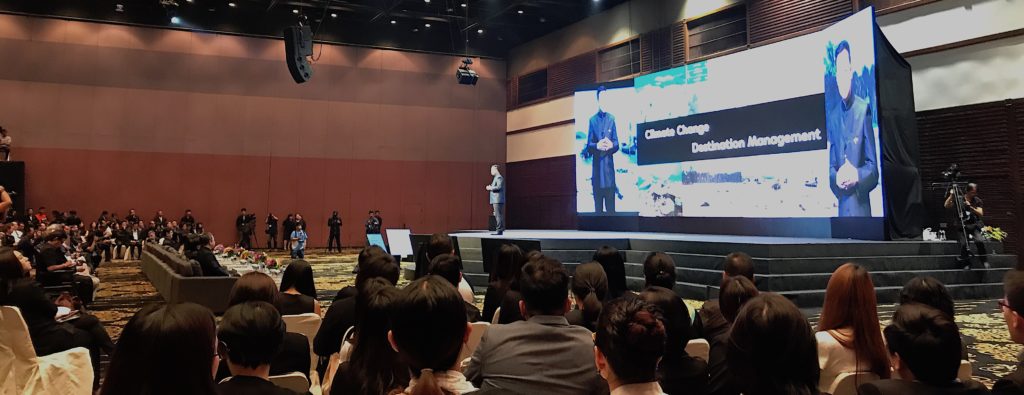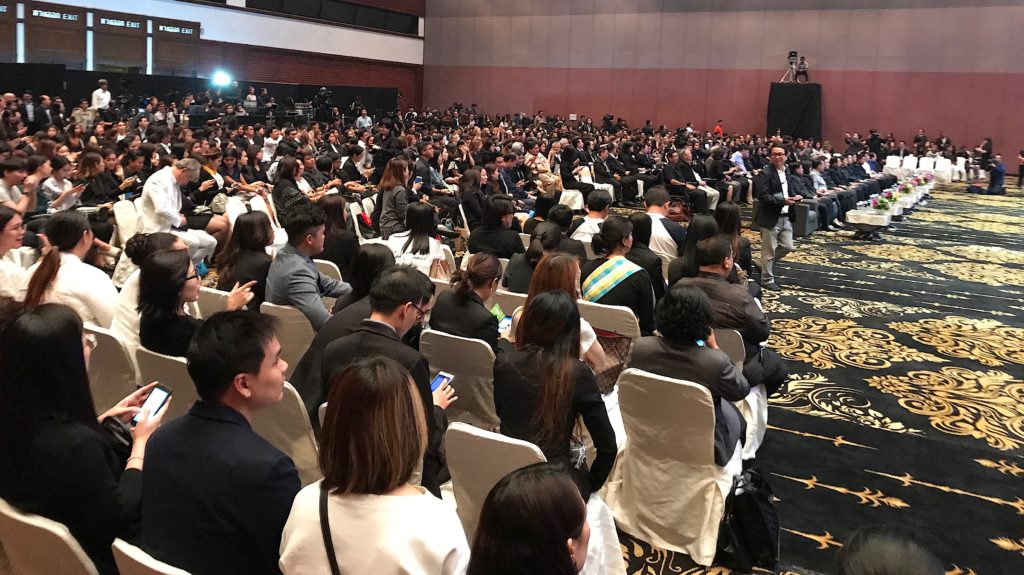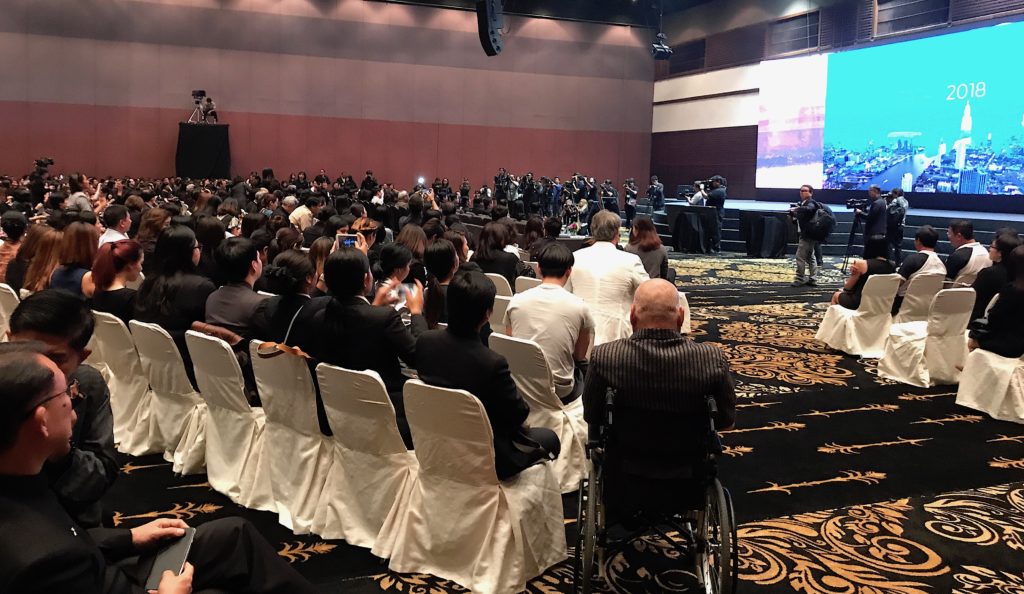
24 Jul, 2017
Why the Thai Tourism Action Plan has outlived its usefulness, and what to do about it
Bangkok – When Tourism Authority of Thailand governor Mr. Yuthasak Supasorn unveiled the TAT Action Plan for 2018 on 17 July 2017, he did something never done before at this annual event. He flashed up a slide showing the impact of climate change and the deteriorating conditions of some popular Thai beach resorts. Without mentioning any names, he explicitly stated that the Thai tourism industry must accept the reality that tourism is the cause of this.
However, after having correctly flagged a looming threat, he recommended solutions which are only partially right.
According to the TAT and the Ministry of Tourism & Sports, the two apex government agencies in charge of tourism sector, the solution is two pronged. The first is to promote secondary destinations. The second is to promote sustainability through various projects and activities such as awareness-building campaigns, certification schemes, best-practise awards, etc.
Although both have been long-standing policies, they have largely failed because they treat the symptoms, not the cause. As a result, the mistakes of the primary destinations simply land up being repeated by the secondary destinations.
Today, 57 years after the establishment of the TAT, not a single Thai tourism destination can claim to have got the right balance between ecology and economy. Not one.

The TAT Governor making his presentation, with the slide on deterioration of Thai destinations in the background.

Nearly 1,000 executives from the Thai tourism private sector turned up for the annual TAT Action Plan presentation.
As I have repeatedly mentioned in my articles and lectures, Thai tourism is a marketing genius and a management dunce. But if the first step towards fixing a problem is to recognise there is one, for the TAT Governor to even accept responsibility for destination deterioration was a revolutionary act.
The main reason why destinations continue to deteriorate is because Thai tourism suffers from a history deficit. It does not learn from the lessons of history. This is the 30th anniversary since 1987 Visit Thailand Year and the 20th anniversary of 1997 Asian economic crisis. It is also the 50th anniversary year of ASEAN, which was founded in Thailand. Those events should have been good historic “pegs” for the TAT to indulge in some soul-searching on the past, present and future of the industry.
Unfortunately, not one of those historic events even rated a mention.
That is not surprising. Both the Governor and the Minister of Tourism, Mrs Kobkarn Wattanavrangkul, have only been office for about three years. Neither of them had a background in tourism. Many of today’s senior TAT and Ministry executives were junior officers or still students in 1987. They have only a fleeting recall of VTY 1987, and its historic role revolutionising the Thai, ASEAN and global tourism industries. Amongst the young generation in the Thai tourism private sector, no-one can remember VTY or what great event it was designed to commemorate.
Tourism executives in both the public and private sectors do not get paid to dwell on the past but to meet business and policy targets of the future.
To do this, the TAT has to pull fancy new marketing slogans out of its hat every year. The current one is to become a Quality and Preferred Destination. The TAT Governor spent 30 minutes outlining how this is to be done, of which 95% was spent on marketing strategies, plans and targets.
Instead, let me offer my 15 points which could help the Thai tourism industry fulfill its objectives far more effectively:
1- Mainstream the Sufficiency Economy industry-wide: This brilliant concept, very Gandhian and Buddhist in its approach, is gaining traction only now AFTER the death of its author, His Majesty King Bhumibhol. While he was alive, the tourism industry capitalised on Royal birthdays and other events to attract billions of baht in marketing budgets, but paid little or no attention to the Sufficiency Economy. If it becomes the overarching tourism management and development philosophy, Thailand could become a global leader in the management of tourism, just as it has in marketing of tourism. The process has started but is a long, long way from being mainstreamed.
2- Start monitoring the impact of tourism: Tourism Minister Mrs Kobkarn has just attended a UN World Tourism Organisation conference in Manila to launch standardized statistical methodologies for measuring the ecological impact of travel and tourism. The conference outcomes have yet to be clearly explained to the Thai tourism industry. In fact, the ministry could and should take the lead in setting up such measurement and monitoring systems and implementing them across Thai destinations. This will contribute much more towards establishing Thailand as a quality, and preferred tourism destination than a marketing plan.
3- Replace AEC with the ASEAN Socio-Cultural Community: Thailand will host the next ASEAN Tourism Forum in Chiang Mai in January 2018. This will be the first major event after the regional grouping marks its 50th anniversary in 2017. The entire ASEAN growth trajectory has been based on the philosophy of ASEAN Economic Community, with virtually no attention being paid to the ASEAN Socio-Cultural Community. Even in the travel and tourism industry, many don’t know that ASCC exists or how it relates to them. Yet the ASCC is probably far more important to the future of travel and tourism than the AEC. Another imbalance that needs to be rectified.
4- Institute carrying capacity controls: Related to both sustainability and the Sufficiency Economy. Setting carrying capacity limits was recommended by many TAT studies and master-plans dating way back to the 1970s. None were implemented anywhere. Just as over-eating leads to nausea, so too do destinations suffer similarly. Many have already hit their limits, but are continuing to gorge themselves. It does not make sense.
5- Suspend new business licenses in congested areas: This goes hand in hand with carrying capacity controls. The TAT says it wants to decongest popular destinations. That is virtually impossible as long as more and more tourism businesses continue to open in the congested areas. Businesses always will want to open where the business is. But temporarily suspending new business licences would give existing businesses some relief from constantly growing competition in their own neighbourhoods. Congested destinations could take a time-out to reinvent and refresh themselves in line with the policy of becoming preferred and quality destinations.
6- Stop wasting money on pork-barrel events: The World Travel & Tourism Council summit was one of the biggest waste of taxpayers money – more than US$3million, including US$250,000 paid to the discredited former UK Prime Minister David Cameron for an awful 25-minute speech. If that money had been given to organise an international conference in cooperation with the Bangkok-based UN Economic and Social Commission for Asia and the Pacific on how travel & tourism can meet the UN Sustainable Development Goals, it would have led to more productive results and attracted a higher level of public-private sector participation. In fact, such an event can and should be organised annually. Having the UN system in Bangkok is an unmatched competitive advantage that the Ministry of Tourism has never capitalized on.
7- Fix the footpaths: There is virtually no city in Thailand where tourists can walk the footpaths without fear of tripping or falling, or smoothly tow their baggage. Compare Bangkok’s footpaths to those in Singapore to see the difference. Footpaths are meant for pedestrians but they are either taken over by the street vendors or in a state of disrepair. Is this what makes a quality destination? Granted, monitoring footpaths is not the TAT’s job, but that is where other government agencies come in.
8- Make the Bangkok transport network more user-friendly: Bangkok arguably has the world’s most diverse means of transport – motorcycles, river and canal boats, buses, underground and overhead mass-transit systems, tuk-tuks, taxis and limos. If all these could be properly mapped and organised, and the rates/fares clearly demarcated, it would go a long way towards helping visitors get around comfortably.
9- Boost travel for the physically challenged: Has the Thai tourism industry ever undertaken a campaign to attract physically challenged visitors? Never. Bangkok, and Thailand in general, is one of the worst cities in ASEAN for the physically challenged. Cities which do not cater to the mobility needs of their own disabled people cannot promote themselves to PwDs from abroad. And yet, it is the need of the hour. The demographics of ageing societies means there will be many more PwDs in future. Fixing this would open up a huge market and also go a long way towards better establishing Thailand as a truly Quality Destination.

The TAT has one staff member who is physically challenged, and attended the Action Plan presentation
10- Improve signage: Nationwide, the signage system is atrocious. Spellings of the various destinations are often different from those in maps and guidebooks. Many signs simply can’t be seen because of chaotic clutter. In tourist resorts, advertising and direction signs are just planted anywhere on the roadsides. These days, with googlemaps, many of these signs are totally unnecessary.
11- Teach airport taxi drivers basic etiquette: Visitors arriving at Thailand’s international airports do not have much choice in terms of public access to their destinations, especially in Bangkok. A public taxi is usually the most convenient. Rather than being greeted with a friendly “Sawasdee khrab. Welcome to Thailand,” the taxi-driver will offer a brusque “Where you go?” Teaching these drivers simple etiquette and basic conversation will go a long way towards enhancing the sense of welcome, as well as the image of Thailand as a quality destination.
12- Clean the khlongs (canals): The khlongs were the blood vessels of Bangkok, the primary means of transport and communication within the city. No other city in Asia has this wonderful network. Today, they are a mess, smelling of putrid garbage and effluents dumped by the many households and small factories on both sides of the embankments. Cleaning up these arteries would certainly help improve the quality of the visitor experience, make it much easier to reach many tourist spots all over the city, increase the average length of stay and certainly enhance one of the city’s unique selling propositions. If the city’s palaces and temples are spotlessly clean, why aren’t the khlongs?
13- Improve the quality of tourism websites: Thai tourism has some of the worst English-language websites. Just check out the website of the Ministry of Tourism and Sports, the Thai Hotels Association, the Association of Thai Travel Agents, the Department of Aviation, the Airports Authority of Thailand, even major corporations such as Thai Airways International. With the sole exception of the TAT, the Thailand Convention and Exhibition Bureau and the Thailand Incentive & Convention Association, all others are in a sorry state, especially the media sections. Thai Airways International once produced some of the best media and PR in Asia. It now produces some of the worst. Fixing this would go a long way towards helping boost the level of positive publicity.
14- Improve the quality of travel and tourism training institutions and universities. Just about every university and educational institution is offering travel & tourism courses these days, because there is strong demand for qualified personnel. But competition amongst universities is high, and the level of personnel is not as high as it should be. Many experienced staff from Thailand’s public institutions such as the TAT, airports and airlines who retire every year sooner or later land up teaching at a University. That is a good thing, but helping upgrade the quality of travel and tourism institutions through better facilities and equipment will also improve the quality of research output, and attract more students from around the ASEAN and Mekong regions.
15- Consumer protection laws and crimes against tourists: Every day, tourists become victims of crime, murder, rape, fraud, accidents caused by negligence, drunk driving and a whole bunch of other problems. These statistics are the most well-kept secrets in travel and tourism. If publicised, they might contradict the marketing slogans of Thailand being full of friendly, hospitable, service-minded people. In reality, Thailand is just like any other country, with good and bad people. Like the status of deteriorated destinations, Thailand must accept this reality. Admitting the extent of this problem might go a long way towards facilitating solutions. Sweeping them under the carpet only makes it worse.
Conclusion
Times have changed phenomenally, and are continuing to change. But the TAT planning process is still stuck in the same old rut, using the same old strategies to drive the same old growth targets. Travel & tourism has become too big to fail but, with the Chinese tourism gusher in full flow, it also risks becoming the victim of its own success.
The planning process requires more regional and global perspectives, comprehensive inputs, realistic what-if scenarios, SWOT analysis and risk assessments. The TAT Action Plan is excessively focussed on marketing and needs to be replaced with a broader, more holistic plan involving all stakeholders such as transportation networks, provincial governors, security and diplomatic communities, environmentalists, the culture-arts-heritage sector, and much, much more.
The better they understand each other’s goals and objectives, the better they will all be able to work together in making Thailand a Quality, Preferred, Sustainable Destination.



Liked this article? Share it!